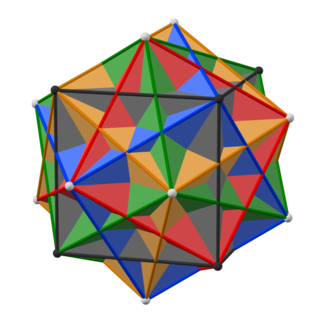In mathematics


36 is both the square of six, and the eighth triangular number [1] or the sum of the first eight non-zero positive integers, which makes 36 the first non-trivial square triangular number. [2] Aside from being the smallest square triangular number other than 1, it is also the only triangular number (other than 1) whose square root is also a triangular number. 36 is also the eighth refactorable number, as it has exactly nine positive divisors, and 9 is one of them; [3] in fact, it is the smallest number with exactly nine divisors, which leads 36 to be the 7th highly composite number. [4] It is the sum of the fourth pair of twin-primes (17 + 19), [5] and the 18th Harshad number in decimal, as it is divisible by the sum of its digits (9). [6]
It is the smallest number with exactly eight solutions (37, 57, 63, 74, 76, 108, 114, 126) to the Euler totient function . Adding up some subsets of its divisors (e.g., 6, 12, and 18) gives 36; hence, it is also the eighth semiperfect number. [7]
This number is the sum of the cubes of the first three positive integers and also the product of the squares of the first three positive integers.
36 is the number of degrees in the interior angle of each tip of a regular pentagram.
The thirty-six officers problem is a mathematical puzzle with no solution. [8]
The number of possible outcomes (not summed) in the roll of two distinct dice.
36 is the largest numeric base that some computer systems support because it exhausts the numerals, 0–9, and the letters, A-Z. See Base 36.
The truncated cube and the truncated octahedron are Archimedean solids with 36 edges. [9]
The number of domino tilings of a 4×4 checkerboard is 36. [10]
Since it is possible to find sequences of 36 consecutive integers such that each inner member shares a factor with either the first or the last member, 36 is an Erdős–Woods number. [11]
The sum of the integers from 1 to 36 is 666 (see number of the beast).
36 is also a Tridecagonal number. [12]


